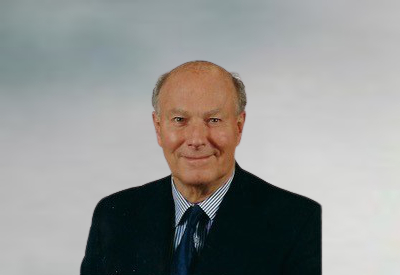Selling Services Requires a Plan and Marketing

Mar 11, 2020
By David Gordon
Much is talked about how distributors needing to sell services to differentiate themselves. They need to create/provide solutions and will need to generate revenue from these services. While some of the discussed services are unbundling what is currently provided/expected, others are more consultative in nature or services that customers/contractors can outsource to distributors to help improve their productivity or where the distributor has more expertise.
Rockwell distributors are typically regarded as in the forefront of this initiative, typically because Rockwell is pushing them into this space.
Consultants have promoted that offering service is “the only way” distributors can survive in the face of eCommerce (and the looming threat of Amazon).
While grand ideas, in most instances few are considering how daunting the challenge can be.
Consider your current revenues. What would 10%, or 25% of sales represent in services? Probably a significant sales volume? Are you resourced to support that? Do you have enough bodies to charge for their hours? The skill set? (And we won’t ask if your ERP system can handle labour hours!)
Further, most companies haven’t set a revenue or product mix goal for themselves so that they are then forced to build a business model to achieve the goal.
But another problem is understanding the services sale and developing an implementation plan.
Selling service is different. It requires either identifying or creating demand
Horizon Solutions, a Rockwell distributor, recently had a posting that did a very good overview “selling” a digital transformation initiative to a manufacturer (some editing has been done for brevity):
5 Steps to Digital Transformation Success, by Jim Bischoff
If you are like me, you have heard a lot of buzz in the industry about digital transformation. Statistics show that 60 to 80% of digital transformation initiatives fail. This is why the manufacturing community is moving slowly. Maybe you are just trying to figure out what digital transformation is and how it can help you and your company, or perhaps you are trying to figure out where to begin on your journey.
Digital transformation — a simple definition
Digital transformation is using information that should be available to you to increase productivity and profitability and to maintain long-term viability.
To create a success plan, you must discover your “need to do’s.” Understanding the information that all the stakeholders need and the data that you currently have will allow you to identify what needs to be done.
Think big, start small, scale fast
1. Think big
This is the discovery phase. This is the “what,” not the “how.” Here are some questions to ask yourself:
• What is limiting my productivity and profitability? Possible answers: Unplanned downtime, excessive scrap, OEE, capacity limitations, regulatory compliance, etc.
• What may be impacting my long-term viability? Possible answers (in addition to above): flexible manufacturing, skills shortages, rising capital investment costs, agile response to consumer demands, global competition, etc.
Once these questions are answered, continue to dive deeper.
In order to think big, you should ask these questions to each of the key stakeholders in your company.
2. Start small
As I read about the high failure rate of digital transformation initiatives, it appears many that failed adopted a “Think big, start big” approach. Digital transformation not only requires technology changes but cultural changes as well. Too much change at once causes stress and will likely lead to failure. Unproven pilots may not scale well.
If you followed step one above, you most likely determined that additional information is needed to positively impact your productivity. Having this information will also give you a good idea where you should start small.
Digital transformation — time to ask yourself more questions:
• How will I display the information I need? Who needs to see it? Where do they need to see it (local, remote, mobile, etc.)? How often does it update (real-time, daily, etc.)? Where does it come from? Do I have a hardware and software platform to visualize the data? Is it scalable? Is it secure?
• Do my assets produce the data I need? Do my control systems support adding smart devices that produce that data? Are my control systems current technology? Are they supported (by you AND the vendor)? Are they scalable? Secure?
• Do I have the appropriate infrastructure to support the above? Are my assets networked? Is my network stable? Is my network scalable? Is it secure?
Forcing yourself to focus on the above building blocks increases your chance for success. Challenge yourself to think about them from the top down, but invest in the solutions from the bottom up. You can’t have all that great information you need without devices that produce the data, and the infrastructure to connect it all together.
• Digital transformation — focus on the infrastructure first. Be sure it is robust, secure, and scalable. Consult with industrial networking experts and invest in assessment and design services, if needed.
• Then add those smart devices (IIoT Sensors) that you need, like pressure, vibration, temperature, speed, counts, etc. Talk to your control system partner and ensure your assets can support the technology needed. Invest in lifecycle assessment or modernization services, if needed.
• Invest in scalable platforms for data visualization. Get together with your IT department and weigh the options of virtualization, on-site hosting, cloud hosting, thin clients, etc. Again, consult with industry experts that work with manufacturing, not just IT organizations.
The previous three steps can be done as a part of a proof of concept (PoC) or in preparation for that project.
3. Scale fast
Step two should have gotten you to a PoC. But before you scale, you need to evaluate.
• Was the PoC project successful?
• Did you improve productivity, profitability, or viability?
• Did you get cultural buy-in?
• Are people comfortable with electronic information vs. printed reports?
• Are people using and trusting the technology that has been implemented?
• Does the technology selected appear to be scalable to meet your overall objectives?
Now is the time to re-evaluate before you scale.
You need to be comfortable with your answers to these questions before you scale up to a production line, an area, or an entire facility. Address concerns and move forward.
Remember:
• Don’t get dragged down by the minutiae.
• Don’t wait for the next latest and greatest technology.
• Ask yourself the cost of not increasing your company’s productivity, profitability, and viability by scaling.
4. Repeat
The projects I have seen that go from determining desired business outcomes to successful proof of concept have taken from as little as six months, to 2-3 years or longer. In that time, market conditions, customer demands, technology, and regulations may have changed dramatically. Put a plan in place to circle back and ensure that your big thoughts are still driving you to enhanced productivity, profitability, and viability. Work with your consultants and delivery partners to tweak your plan to accommodate these new demands. Success is always a moving target.
5. Select the right partners
This a critical step and is really a sub-set to steps one through four. To choose the right partner, you will need to determine the qualifications. Here are some possible examples.
A good partner:
• Understands your desired business outcomes and is available to consult.
• Wants to help you, not just sell to you.
• Knows your industry segment and has experience with similar organizations.
• Is well respected in the industry.
• Is in it for the long haul and will stick by you through thick and thin.
• Knows the technology required and has experience in its implementation in similar applications.
• Has a network of available resources that also meets the above criteria.
• Knows their own limitations and engages those resources when appropriate.
Jim wrote this as an approach to customers, which is the sales point. To sell services needs to be in the mind of the customer and shows them that you are helping them address their issues… and are not a threat trying to replace them! Lay out the benefits, share the methodology, highlight the ROI but more importantly, discuss benefits in terms of how it will help their business.
Whether you are an industrial distributor seeking to help companies travel the digital transformation / connected manufacturing journey or calling on contractors to discuss modular construction or “ready to install” products to improve their productivity, training your salespeople a different sales mentality is critical. Perhaps you need services specialists who speak a different language and are measured differently. Marketing services is different than promoting products. Pricing is different. It’s a different business model.
And sometimes leading with services can generate a larger, deeper, and more profitable product revenue stream.
With labour and skill sets (talent) at a premium, distributors (and some manufacturers) have an opportunity to broaden their value to their customers. This is an opportunity for every distributor, requires investment, perseverance and patience, but can be a differentiator, especially if you believe in customer segmentation and are open to a nuanced business model.
David Gordon is President of Channel Marketing Group. Channel Marketing Group develops market share and growth strategies for manufacturers and distributors and develops market research. CMG’s specialty is the electrical industry. He also authors an electrical industry blog, www.electricaltrends.com. He can be reached at 919-488-8635 or dgordon@channelmkt.com.











